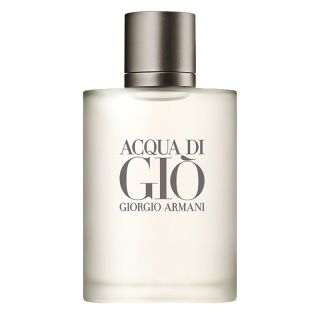
- Freesia
- perfume

Perfume50 ML
Perfume5 ML
Decant

Perfume50 ML
Perfume5 ML
Decant

Perfume50 ML
Perfume150 ML
Perfume

Perfume50 ML
Perfume200 ML
Perfume

Perfume50 ML
Perfume1 ML
Sample

Perfume50 ML
Perfume30 ML
Perfume

Perfume50 ML
Perfume5 ML
Decant

Perfume5 ML
Decant50 ML
Perfume

Perfume50 ML
Perfume5 ML
Decant

Perfume50 ML
Perfume5 ML
Decant

Perfume50 ML
Perfume200 ML
Perfume

Perfume5 ML
Decant50 ML
Perfume

Perfume50 ML
Perfume5 ML
Decant

Perfume50 ML
Perfume30 ML
Perfume

Perfume200 ML
Perfume50 ML
Perfume

Perfume50 ML
Perfume30 ML
Perfume

Perfume50 ML
Perfume5 ML
Miniature

Perfume100 ML
Perfume50 ML
Perfume

Perfume5 ML
Decant

Perfume50 ML
Perfume30 ML
Perfume

Perfume60 ML
Perfume50 ML
Perfume

Perfume50 ML
Perfume2 ML
Sample

Perfume5 ML
Decant125 ML
Perfume

Perfume50 ML
Perfume30 ML
Perfume

Perfume5 ML
Decant50 ML
Perfume

Perfume100 ML
Perfume80 ML
Perfume

Perfume50 ML
Perfume30 ML
Perfume

Perfume50 ML
Perfume200 ML
Perfume

Perfume50 ML
Perfume30 ML
Perfume

Perfume60 ML
Perfume5 ML
Decant

Perfume50 ML
Perfume5 ML
Decant

Perfume80 ML
Perfume5 ML
Decant

Perfume50 ML
Perfume5 ML
Miniature

Perfume50 ML
Perfume5 ML
Decant
Freesia perfume derives its charm from the delicate and aromatic freesia flower, a bloom native to South Africa that has captivated perfumers with its sweet, citrusy, and slightly peppery scent. The flower’s bright, dewy fragrance is often associated with freshness, elegance, and subtle femininity, making it a favored note in many floral-based perfumes. Freesia began appearing in modern perfumery during the late 20th century as perfumers sought lighter, more transparent floral scents to appeal to a growing demand for clean and wearable daytime fragrances.
The origin of freesia perfumes traces back to European fragrance houses experimenting with floral compositions that balance freshness and romance. Today, freesia is not just a supporting note it’s the star in many beloved fragrances by brands such as Jo Malone, Versace, and Gucci. Whether used as a top note for brightness or a heart note for floral richness, freesia provides a natural charm that appeals to both classic and contemporary tastes.
Quality Indicators and Prices of Freesia Perfume Products
Quality freesia perfumes can be identified by their blend stability, lasting power, and the authenticity of the freesia accord used in the composition. A well-formulated freesia perfume offers a crisp, fresh-floral scent that doesn't turn synthetic or overly sharp over time. High-end brands ensure the freesia note is either extracted naturally or crafted through refined aroma molecules that closely resemble the true flower. These perfumes also show complexity by balancing freesia with other complementary notes such as rose, jasmine, pear, or musk.
Price often correlates with quality in freesia perfumes. Niche or designer freesia scents made with sophisticated extraction techniques or luxurious blending processes generally command higher prices. However, there are also accessible freesia-inspired perfumes on the market that deliver decent longevity and a pleasing scent profile. What sets the premium versions apart is their sillage, projection, and how seamlessly the freesia is integrated with the other notes, creating a natural, lingering elegance.
Price of Freesia Perfume Products
Freesia perfume prices vary widely depending on the brand, concentration (EDT, EDP, or extrait), and packaging. Entry-level options from fast-fashion or mid-range beauty brands can start from AED 50 to AED 150, offering basic freesia-scented body mists or light Eau de Toilettes. These are often targeted toward younger audiences or for casual wear during the day.
On the other hand, designer or niche freesia perfumes such as those from Jo Malone, Byredo, or Maison Francis Kurkdjian range from AED 400 to AED 900, with luxury extrait versions or limited editions exceeding AED 1,200. These higher-end versions use more refined ingredients and offer a richer, longer-lasting interpretation of freesia that evolves beautifully over time on the skin.
About the Prices of Freesia Perfume Products Around the World
Globally, freesia perfumes maintain a relatively consistent price trend in line with the broader fragrance market. In Europe and North America, the price for mid- to high-end freesia perfumes typically falls between €80–€200 or $90–$250, depending on the brand and bottle size. Niche freesia-centric perfumes from artisanal houses may fetch even higher prices due to limited distribution and small-batch production.
In regions like the Middle East and Asia, particularly in the UAE, KSA, and Japan, prices may be slightly higher due to import duties, brand exclusivity, or premium retail environments. For example, a 100ml Jo Malone Freesia & Pear Cologne may cost around AED 650–AED 750 in the GCC region, whereas the same bottle could be priced slightly lower in the UK or US. However, customers in the UAE often benefit from gift packaging, exclusives, and regional bundles, which add value to the purchase.
About the Cheapness and Expensiveness of Freesia Perfume
Freesia perfumes can be both affordable and expensive, depending on the consumer's expectations for performance, brand prestige, and formulation quality. Affordable freesia fragrances often emphasize accessibility and simplicity, making them suitable for casual daily use or as gifting options. These perfumes may not offer the longest wear or the most natural freesia note, but they serve well as light, fresh floral scents for warm climates.
Expensive freesia perfumes, however, justify their pricing with craftsmanship, refined blending, and superior raw materials. These perfumes often feature freesia alongside rare ingredients like orris, ambrette seed, or white musk, creating a more elegant and multidimensional experience. Additionally, luxury packaging, brand heritage, and exclusivity also contribute to the premium pricing. For consumers who value longevity, sophistication, and uniqueness, the investment in a high-end freesia perfume is often well worth it.
Quality of Freesia Perfume Products
The quality of a freesia perfume is determined by how authentically and harmoniously the freesia note is rendered in the fragrance. High-quality freesia perfumes exhibit clarity, freshness, and a smooth transition between notes. They avoid harsh synthetic overtones and instead offer a soft yet vivid floral bouquet that lingers naturally. Premium brands invest in sustainable sourcing and fine-tuned compositions to ensure the freesia remains crisp, clean, and uplifting throughout the wear.
In general, freesia perfumes from reputable houses have a distinct signature elegant, radiant, and suitable for all-day wear, particularly in spring and summer. They often layer beautifully with other floral or fruity perfumes, making them versatile choices for layering and gifting. Whether worn solo or combined, quality freesia perfumes leave an impression of grace, optimism, and understated luxury.















